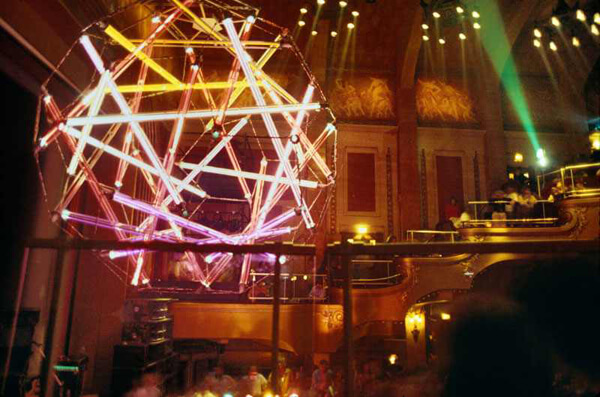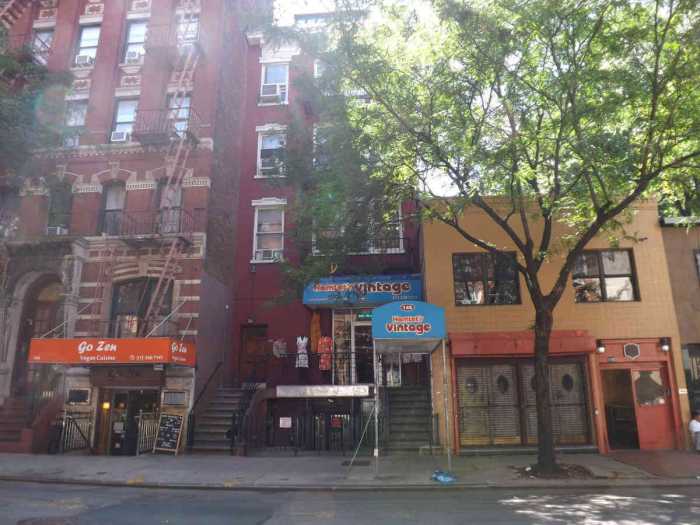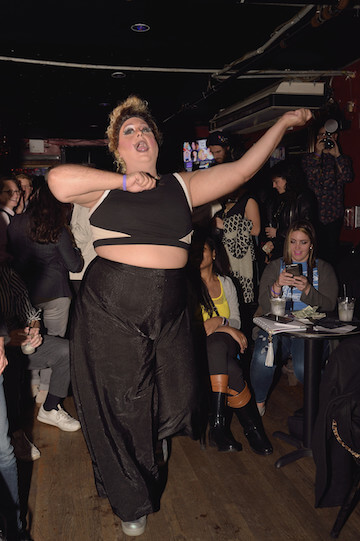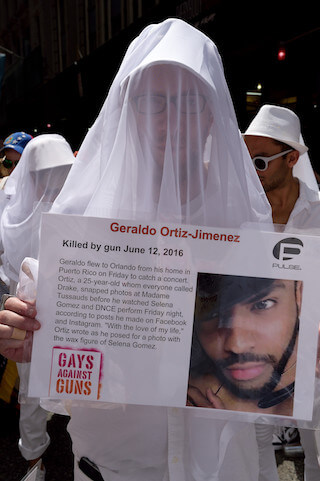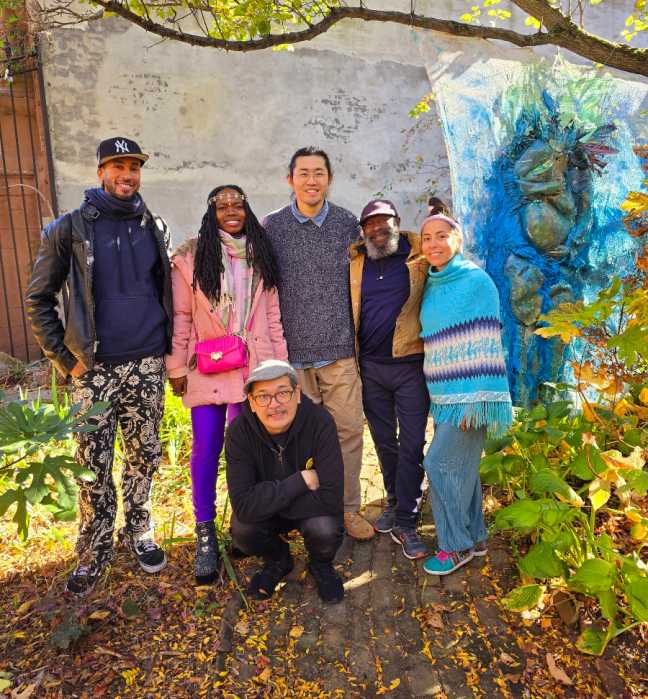Paris' Le Palace in the late 1970s.
“Homosexuality shocks less, but continues to be interesting; it is still at that stage of excitation where it provides what might be called feats of discourse.”
So wrote Roland Barthes — a Big Ol’ Gay Homosexual himself — in a 1978 essay, published as an introduction to “Tricks,” novelist Renaud Camus’ account of “25 Encounters,” all of them explicitly (homo)sexual. Barthes, who lived with his mother until her death a few years before his own, was a much more decorous fellow than Camus. His affairs with actor and screenwriter Jacques Nolot and writer-director André Téchiné were very much on the “down low” (or French equivalent of same). In his last years, however, Barthes began to loosen up. He especially enjoyed going to the gay Parisian disco Le Palace.
“I feel relaxed there,” Barthes enthused. “At Le Palace, the familiar places are many: a salon for chatting, bars to meet in, to rest in between dances, a belvedere from which to gaze, above the intervals of the balustrades, down at the immense spectacle of lights playing over bodies. From each place where I take up my position, I have the delightful impression of occupying a sort of imperial box, from which I can master all that happens… I am not obliged to dance in order to sustain a living relationship with this site. Alone, or at least somewhat apart, I can ‘dream.’”
To anyone who can recall the glory days of Disco in the USA — which is to say before Studio 54 celebrified and, therefore, ruined everything, it’s easy to see what Barthes is talking about. The rise of disco was inextricably tied to the post-Stonewall period of what was once called Gay Liberation. One of the first things the Gay Activists Alliance did when it purchased its Firehouse headquarters on Wooster Street was to have dances every Saturday night. It was a recruitment tool, but also a reminder of how far we’d come. For prior to Stonewall, merely standing still was fraught with peril for gay people.
I was reminded of this by a scene toward the close of “Love is Strange” — Ira Sachs’ marvelous romantic comedy-drama about a gay couple (perfectly played by John Lithgow and Alfred Molina) who after being together for nearly 40 years take advantage of the change in the law and get married — setting a whole series of comi-tragic complications in motion.
In a scene toward the film’s last quarter, our heroes find themselves having a drink at Julius’, arguably New York’s most revered gay bar, recalling a moment when it was less than revered. They were friends with participants in the Sip-in, a protest that made Julius’ (in)famous when on April 21, 1966 Mattachine Society president Dick Leitsch, John Timmons, and Craig Rodwell entered the bar, announced that they were homosexuals, and asked to be served. They were, not surprisingly, refused since the State Liquor Authority had a regulation against any establishment serving “known degenerates” and would have the police close it were it known to do so.
Needless to say clandestine gay bars flourished in the city under the management of organized crime and were disturbed only when the payoff to the NYPD didn’t come through on time or was insufficient. Mattachine chose Julius’ because it had a sign in the window stating, “This is a raided premises,” indicating the cops had shut it down before for serving gays.
Julius’ had a rather ingenious solution to the prohibition on overt homosexual conduct: a very large mirror hung at an angle over the bar. Patrons could look into it and signal their interest to the party-of-the-second-part. In order to “seal the deal,” however, they had to exit the premises where they could complete their “hook up.”
Back in those days, the streets were a lot more copasetic than any bar. Those cruising the West Village’s byways had no fear that the returned glances of a comely stranger posed any threat. We were all there for the same reason, no “mistake” being possible. “Socializing” indoors, however, was another matter. One of the reasons Judy Garland was such an imposing Gay Icon had to do with the fact that her concerts were one of the few places gays and lesbians could congregate to casually chat in full public view. “Lily Law” wasn’t about to raid the Palace (in New York, bien sûr) and pick the gay concertgoers out of the straight ones to harass.
But we couldn’t dance at the Palace. For that, the club was required, which was why the Stonewall Inn — Mafia-run and unsanitary as all get-out — was favored by some for the jukebox it had in the back room and the small space it offered for dancing. In the early morning hours of June 28, 1969, the place was raided — and the customers fought back. Their fury was perchance spurred by the fact that early that day Judy Garland had been laid to rest. (The fastidious have pooh-poohed this notion, but I tend to believe it.) In any event, nothing was the same afterwards.
For Stonewall was not simply a political protest — it was an act of physical violence against the heterosexual status quo. They didn’t see it coming — and no one gay or straight saw what would be coming over the next 45 years. True, you can still get fired in 29 states for your sexual orientation — and in 32 states for your gender identity or expression — but in prime sophisticated urban climes this is not the case. Culturally, the “closet” has collapsed and “openly gay” personalities like Jim Parsons, Neil Patrick Harris, and Ellen (no last name needed) are universally admired.
Ellen makes a point of dancing at the top of each and every one of her afternoon talk shows. She does so “alone,” so to speak. For though it’s clear that her audience is dancing along with her, her turns bring to mind the “line dancing” viewed as permissible on Fire Island in the pre-Stonewall era because partners never faced one another. Not surprisingly, that continued for some time afterwards at discos like the Loft and Flamingo. Who could resist the charms of doing the Madison”?
Indeed, who could resist dancing of any sort, no matter what the risk? Certainly not Frank O’Hara, who celebrates a long gone Mafia-run speakeasy in a poem entitled “At The Old Place” — written in 1955 but not discovered until 1969 — the very year of Stonewall:
Joe is restless and so am I, so restless.
Button’s buddy lips frame “L B T TH O P?”
across the bar. “Yes!” I cry, for dancing’s
my soul delight. (Feet! Feet!) “Come on!”
Through the streets we skip like swallows.
Howard malingers. (Come on, Howard.) Ashes
malingers. (Come on, J.A.) Dick malingers.
(Come on, Dick.) Alvin darts ahead. (Wait up,
Alvin.) Jack, Earl, and Someone don’t come.
Down the dark stairs drifts the steaming cha-
cha-cha. Through the urine and smoke we charge
to the floor. Wrapped in Ashes’ arms I glide.
(It’s heaven!) Button lindys with me. (It’s
heaven!) Joe’s two-steps, too, are incredible,
and then a fast rhumba with Alvin, like skipping
on toothpicks. And the interminable intermissions,
we have them. Jack, Earl and Someone drift
guiltily in. “I knew they were gay
the minute I laid eyes on them!” screams John.
How ashamed they are of us! we hope.
O’Hara, happily ensconced at the Museum of Modern Art — beginning in the card shop and quickly moving his way up the ladder to curator — led a remarkably free and easy gay life amid the painters and poets of the postwar New York scene. His output was voluminous. A “Complete Poems” was soon followed by a volume of “Poems Retrieved” as he left verses all over the place. Perhaps there’s more to come. I certainly hope so.
Frank O’Hara (who once said of a lover, “You were made in the image of god / I was not / I was made in the image of a sissy truck-driver” — died on July 25, 1966 of internal injuries from an accident two days before on Fire Island, where he had been run over by a dune buggy in the wee smalls. An irony, then, that in January of 1980, Roland Barthes was knocked down by a laundry van while walking home through the streets of Paris. Barely more than a month later, he succumbed to the chest injuries sustained in that accident.
Barthes didn’t much care for gay politics, despite the world it had created for him. As for O’Hara, as noted by Stuart Byron in Marjorie Perloff’s “Frank O’Hara: Poet Among the Painters,” “What would Frank have thought of gay liberation?,’ I asked John Button. ‘Oh, he would have thought it was silly,’ came the reply, ‘but he would have loved the dances.’”

